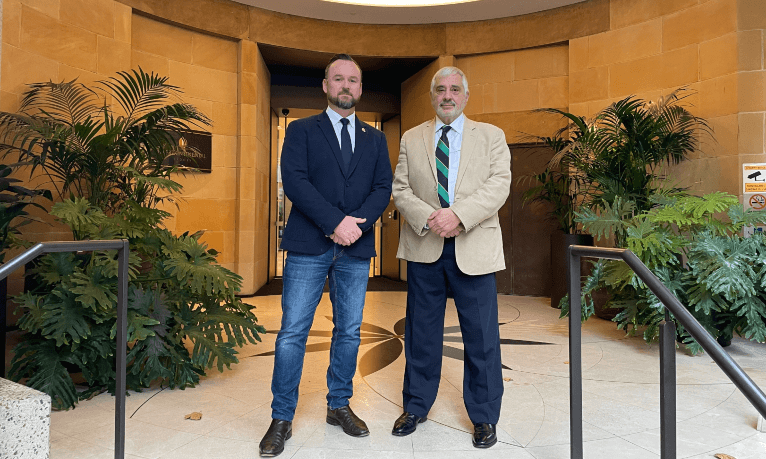Reflecting on Bougainville

Story by Dr. Karl James, Head of Military History at the Australian War Memorial, Canberra. This article was originally published in the June 2020 issue of Reveille. It has been adapted for publication here.
Bougainville does not resonate like Tobruk, Changi or Kokoda. Few people today are likely familiar with the location of Torokina or aware of the actions and battles fought at Porton Plantation or Slater’s Knoll.
Yet Bougainville was one of the largest campaigns fought by Australian forces during World War II. It was a slow, gruelling nine month campaign to destroy the Japanese occupying the island.
A former German colony, Bougainville, in the Northern Solomons, was mandated to Australia as part of the Territory of New Guinea by the League of Nations after World War I. Japanese forces invaded parts of the island in 1942. More than 60,000 Japanese personnel would occupy Bougainville, constituting the Japanese 17th Army.
US Marines Land
In late 1943, United States Marines made an amphibious landing at Cape Torokina on Bougainville’s west coast and established a large, fortified base. The operation occurred as part of the major Allied offensive to isolate and neutralise Rabaul, the principal Japanese base in the South Pacific.
The US Marines were subsequently relieved by the US Army. In March 1944 the Japanese counterattacked. The Americans defended their perimeter but didn’t venture beyond Torokina. It deserves mentioning that Fijian soldier Private Sefanaia Sukanaivalu was awarded a posthumous Victoria Cross for his self-sacrifice during a patrol clash.
Australia and New Zealand
With American operations in the South West Pacific focused on the Philippines, from November 1944 the II Australian Corps (the 3rd Division and the 11th and 23rd Brigade groups) relieved the US forces garrisoning Torokina and the outer islands.
Several squadrons from the Royal New Zealand Air Force flying Chance Vought Corsair fighter bombers were also based at Torokina, as was a Royal Australian Air Force army co-operation wing – which included No.5 Tactical Reconnaissance Squadron flying CAC Wirraways and Boomerangs. These aircraft were used as ‘spotters’ for the army and, with the New Zealand Corsairs, in ground attack roles.
Lieutenant-General Stanley Savige commanded the II Australian Corps. He tightly controlled the campaign. The operations themselves were conducted with brutal skill and efficiency. Savige divided the island into three operational areas: the Central, Northern and Southern sectors.
Three Sectors
In the Central Sector, the Australians followed the Numa Numa Trail across the island’s mountainous spine to the east coast. This region was used as the ‘nursery sector’ where inexperienced units gained combat experience before being deployed to active areas.
In the Northern Sector, the Australians followed the northwest coast towards Buka. Moving on foot and by a series of small amphibious landings, the advance went well until a force from the 31st/51st Battalion was landed at Porton Plantation in June 1945. Suffering heavy casualties, the force was eventually evacuated in what was the only Australian defeat of the campaign.
The main fight was in the Southern Sector as the Australians headed towards Buin, the major Japanese base on the island. The war the infantry knew was one of performing section patrols along stinking, humid jungle tracks and putrid swamps, with an occasional company-size attack. Fatigue and mental strain from contacts with the enemy and harassing artillery fire was constant.
A Japanese Counterattack
In April 1945, the Japanese launched a major counterattack. The main blow fell on the 25th Battalion dug in on Slater’s Knoll. Although the Japanese attack was poorly coordinated, the encircled and outnumbered Australians were hard pressed. The battalion was close to being overrun before Matilda tanks from the 2/4th Armoured Regiment broke the Japanese. With engineers, tanks, artillery and air support, the Australians continued their slow advance towards Buin.
The support of the Bougainvilleans was also vital. They worked as carriers and guides and were important sources of intelligence. Once Australian forces gained control of an area, refugee camps were established for the Bougainvilleans, along with hospitals.
The Japanese resisted the Australian advance stubbornly, fighting to hold each track and river crossing. They infiltrated the Australian lines, laying improvised mines and set ambushes along muddy, corduroyed roads. The Japanese experience of the campaign was one of deprivation, desperation and defeat.
The End of the War
The II Australian Corps controlled about two-thirds of Bougainville when the war came to an end. In total, 516 Australians had died and 1,572 had been wounded. Between 1943 and 1945, more than 300 New Zealanders died supporting the US and Australian campaigns.
The Australian corps reported 8789 Japanese killed. Thousands more died from sickness and starvation. From Bougainville’s pre-1942 population of 52,000 people, it is estimated that up to a quarter died during or because of the conflict.
Bougainville did not change the outcome of the war nor contribute to defeating Japan. But the Australian offensive began when the war against Japan was expected to continue into 1946.
Fighting an aggressive campaign in Bougainville fulfilled the Australian Government’s long-standing agenda of employing Australian forces actively in the liberation of the Australian territory. Australian politicians and military planners were not to know the war would end suddenly in August 1945.
Remember Their Achievements
Many of those Australian servicemen and servicewomen who served in Bougainville have now passed. This year, in commemorating the 75th anniversary of Victory in the Pacific (VP) Day and the end of the World War II, let us remember their achievements, alongside those who served in New Britain, New Guinea, in the Philippines, and in Borneo in 1944–45.
We need to do so now, while veterans of these campaign remain among us.







